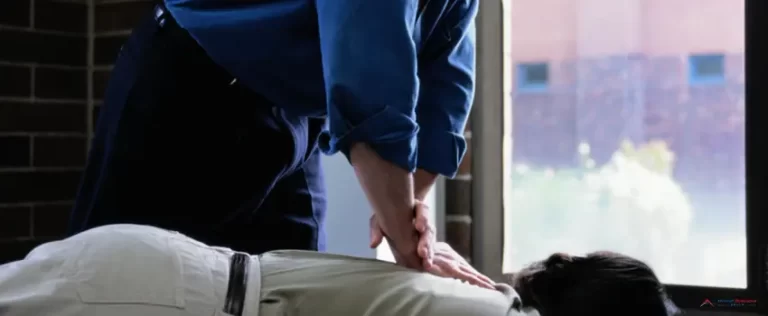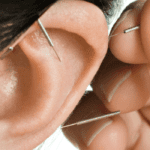Sometimes people feel dizzy because of looking at an optical illusion for far too long or abruptly standing up.
Most times, the wooziness disappears within minutes. However, if you feel like the world around you is constantly spinning, there may be an underlying medical condition.
Do you want to regain balance in your life and get rid of dizziness, nausea, and other symptoms? A chiropractor for vertigo can help improve your quality of life. Advanced Chiropractors Group is here to discuss chiropractic care as a natural vertigo treatment.
What Is Vertigo?
Before we discuss how a vertigo chiropractor can help, let’s first dive deeper into the health condition.
Vertigo refers to dizziness combined with a feeling or sensation of movement or spinning, even if you’re standing still. It can be very debilitating since the dizziness it causes can make it difficult to walk and interfere with your vision and hearing.
Here are the two types of vertigo:
1. Peripheral Vertigo
Your peripheral nervous system refers to the part of your nervous system which consists of nerves and connections outside the brain and spinal cord. Your peripheral nervous system could be responsible for vertigo.
Here are some causes of inner ear troubles leading to peripheral vertigo:
Meniere’s Disease
Meniere’s disease, which affects the inner ears, can cause tinnitus, spinning episodes, and ear pressure. It can lead to progressive hearing loss to permanent hearing impairment.
Acute Vestibular Neuritis and Labyrinthitis
Neuritis and Labyrinthitis are caused by infections of the vestibular nerve and can resolve in days, unlike BPPV or Meniere’s disease, which lasts for a longer time.
Benign Paroxysmal Positional Vertigo (BPPV)
Changes in head position can trigger this condition, causing dizziness. This condition is typically associated with inner ear disorders, natural aging, blows to your head, or severe colds.
Chiropractic care, a natural vertigo treatment, uses gentle manipulation and easy, well-tolerated adjustments. It uses the natural force of gravity to move calcium carbonate crystals inside the inner ear. The symptoms can be significantly improved or eliminated after 3-4 treatments.
2. Central Vertigo
Your central nervous system consists of your brain and spinal cord enclosed in the spinal vertebrae and the skull. Vertigo in the CNS can occur alongside neurological symptoms such as auras, headaches, and sensory symptoms.
CNS-related vertigo can include:
Multiple Sclerosis
Multiple Sclerosis is a central nervous system disorder that affects the immune system. It causes scar tissue plaques to form on neurons. These plaques can interfere with nerve signal transmission.
While chiropractic treatment doesn’t directly impact MS, it can help with fatigue, endurance, and movement range.
Cervicogenic Vertigo
Cervicogenic vertigo is a condition associated with neck injuries, neck pain, or symptoms such as neck movement, including ear pain.
Migraines
Migraines can cause nausea and dizziness. Chiropractic treatment for vertigo may reduce migraine attacks and other symptoms.
By manipulating the neck and releasing tension and compression, chiropractic help for vertigo can help relieve the symptoms.
Symptoms of Vertigo
Apart from understanding how a chiropractor and vertigo treatment helps relieve symptoms, it’s also vital to learn what causes them. It will help you seek the necessary treatment you need.
It can take a long time to identify vertigo symptoms. The symptoms are so bizarre and disorienting that you might be left wondering whether you’re experiencing physical distress, mental distress, or some combination thereof.
Vertigo symptoms vary from person to person. Here are some symptoms associated with vertigo:
- Nausea
- Hearing loss
- Headaches
- Mild to severe dizziness
- Sweating
- Sudden eye movements
- Feelings of being “off-balance”
- Constant ringing in the ears
Causes of Vertigo
It is not always possible to pinpoint the exact reason for vertigo. It is generally believed that vertigo stems from problems with the inner ears. Other factors linked to vertigo include:
- Neck and head injuries
- Fluid buildup
- Pressure within the ear
- Calcium buildup within the ear canal
- Viral infections affecting the ear region
- Medications damaging the ear
Chiropractic Treatment for Vertigo: How Can Chiropractors Help?
There are many vertigo treatment options; however, these treatments will not eliminate vertigo as they don’t target the root cause. A vertigo chiropractor aims to find the root cause and treat it.
Here are different ways a chiropractor for vertigo may approach your treatment:
1. Chiropractic Adjustment
Chiropractic adjustments are a chiropractor’s primary tool to help your nervous system function at its peak. Adjusting the spine improves the communication between the brain and body, including the ears, lymph, and immune system.
A chiropractor for vertigo can treat vertigo caused by an ear infection; chiropractic care can help patients heal faster.
2. At-Home Balancing Exercises
At-home vertigo exercises are a form of natural vertigo treatment that helps relieve peripheral vertigo caused by BPPV. It is best to practice safety when performing these exercises.
Your chiropractor for vertigo will recommend at-home balancing exercises that you can do. They will also show how to do it safely. Here are some exercises that your chiropractor may include in your treatment plan:
Epley Maneuver
You can also do the home Epley maneuver while lying down on a mattress. Make sure you have a pillow on your back that rests under your shoulders when you lie back.
Foster Maneuver
The Foster maneuver (sometimes called the half-somersault) is one of the most common exercises for vertigo. It doesn’t require you to be lying in bed or to have assistance from someone else.
Semont Maneuver
Another exercise for BPPV is the Semont maneuver or liberatory maneuver. Although it takes a bit less time, it is best to do it under the supervision of your chiropractor for vertigo.
3. Head Exercises
Cawthorne exercises, or Cawthorne Cooksey exercises, are a form of vestibular rehabilitation therapy that involves moving the head and eye around to gain control. This helps you become more in tune with your environment.
They may also include coordinating hand-eye movements to regain balance. These exercises are simple and take very little time. Here are some exercises your chiropractor for vertigo might recommend:
- Toe touches
- Head movement
- Eye movement
- Sit to stand
- Shoulder shrugs
Know More About Chiropractors and Vertigo Treatment from Advanced Chiropractors Group
Advanced Chiropractors Group has a network of licensed chiropractors in Clearwater, FL.
With us, living your best life is within reach. Call us today, and we’ll get you connected right away. We can’t wait to serve you!








